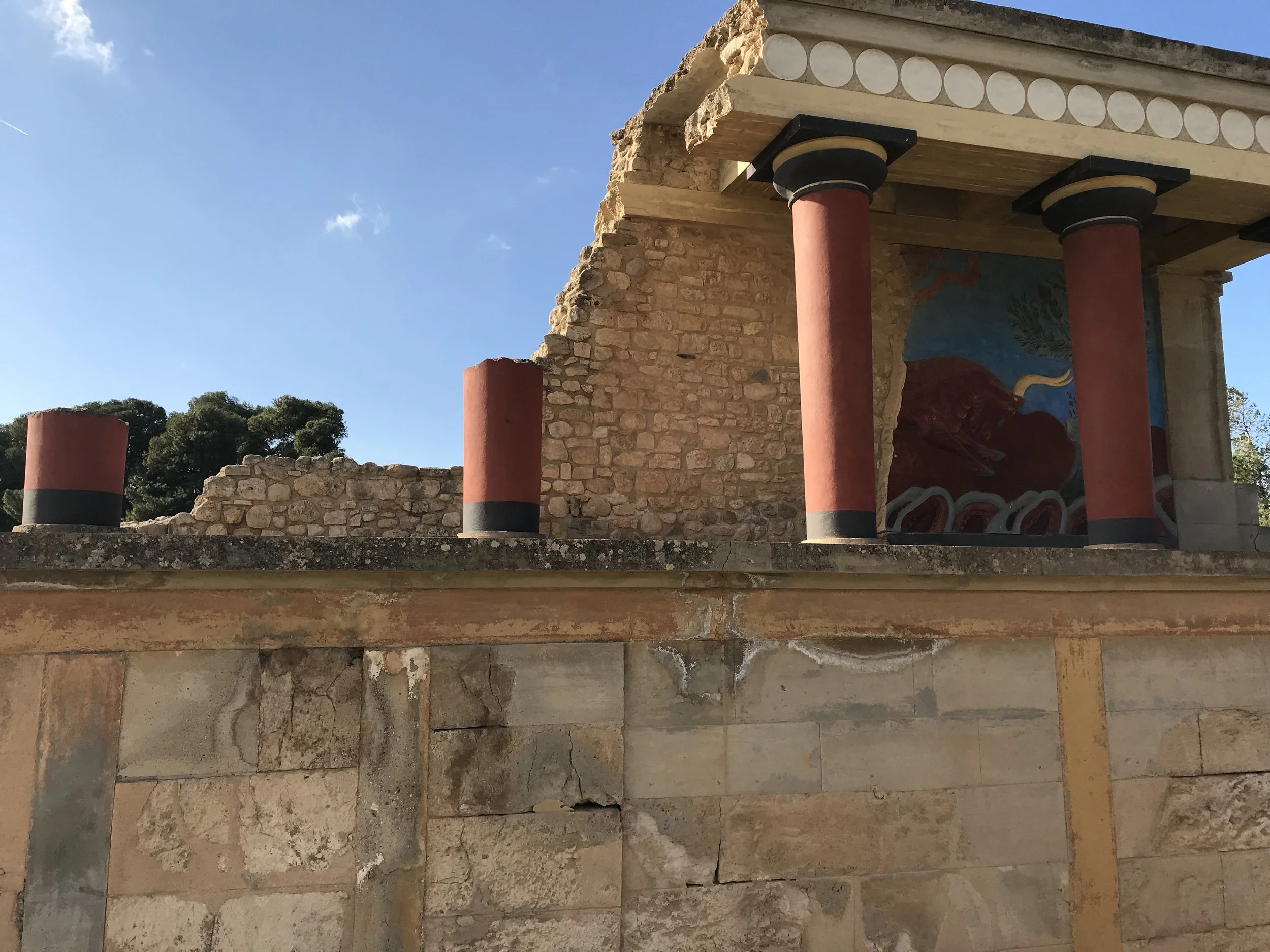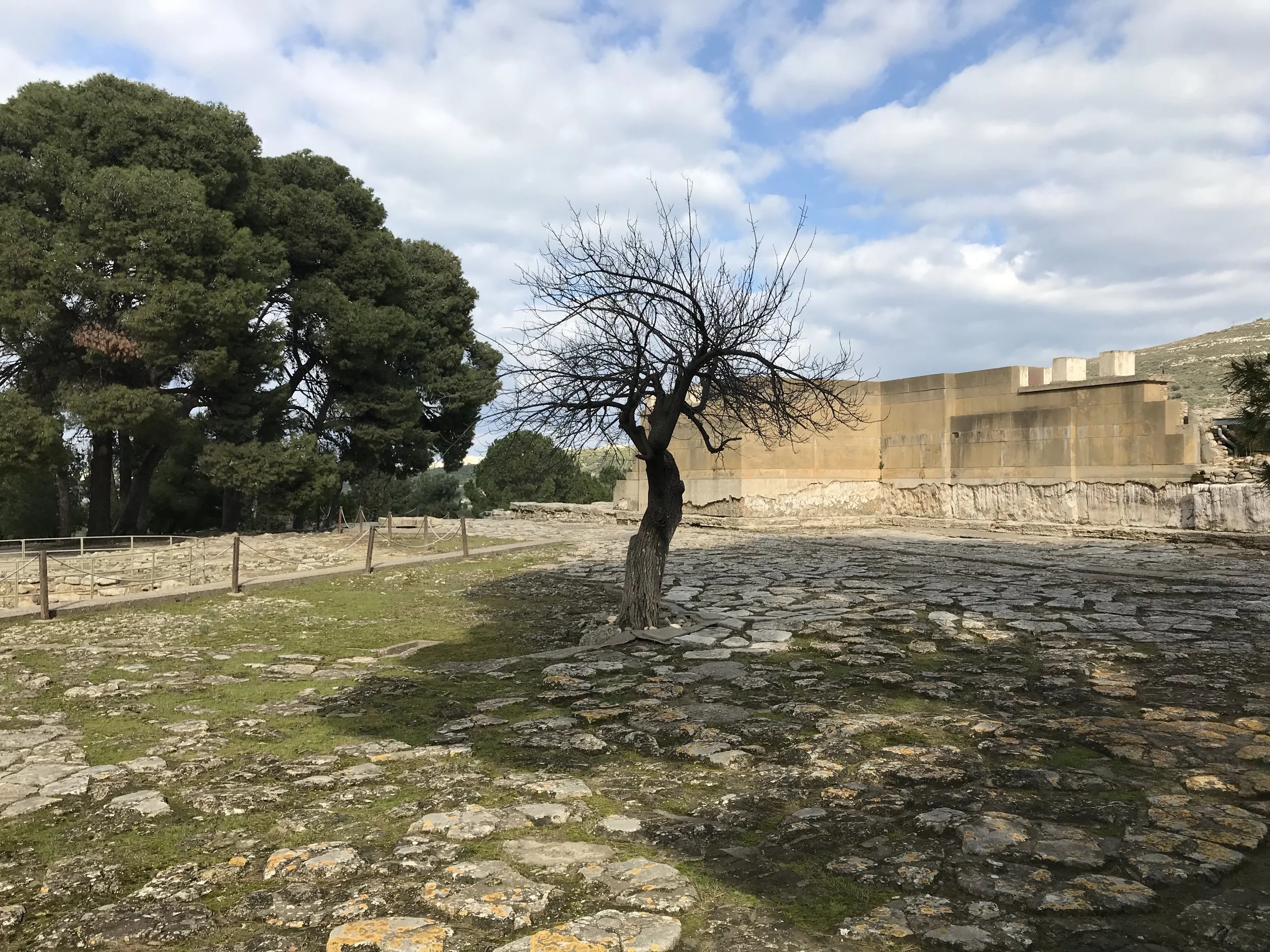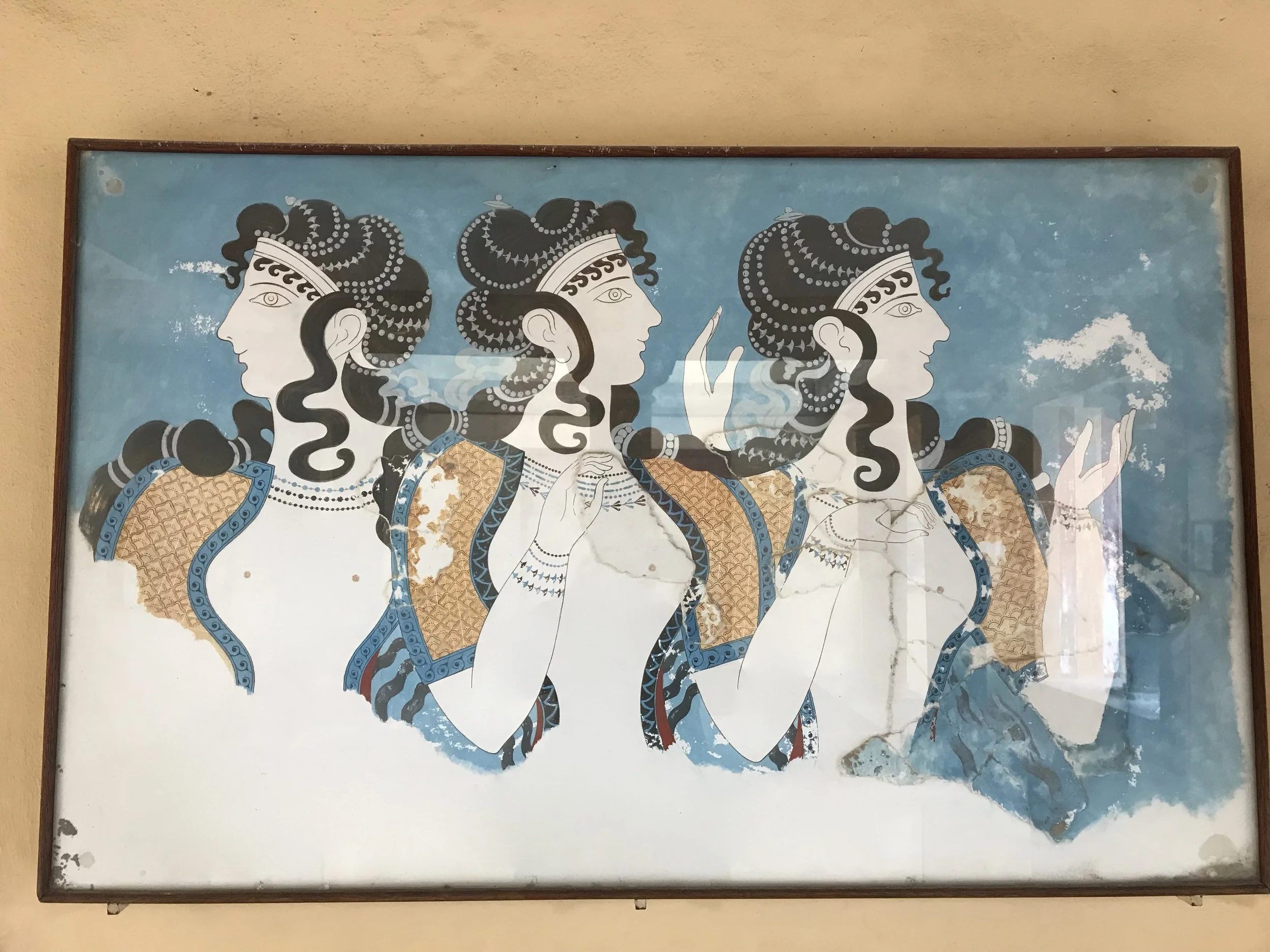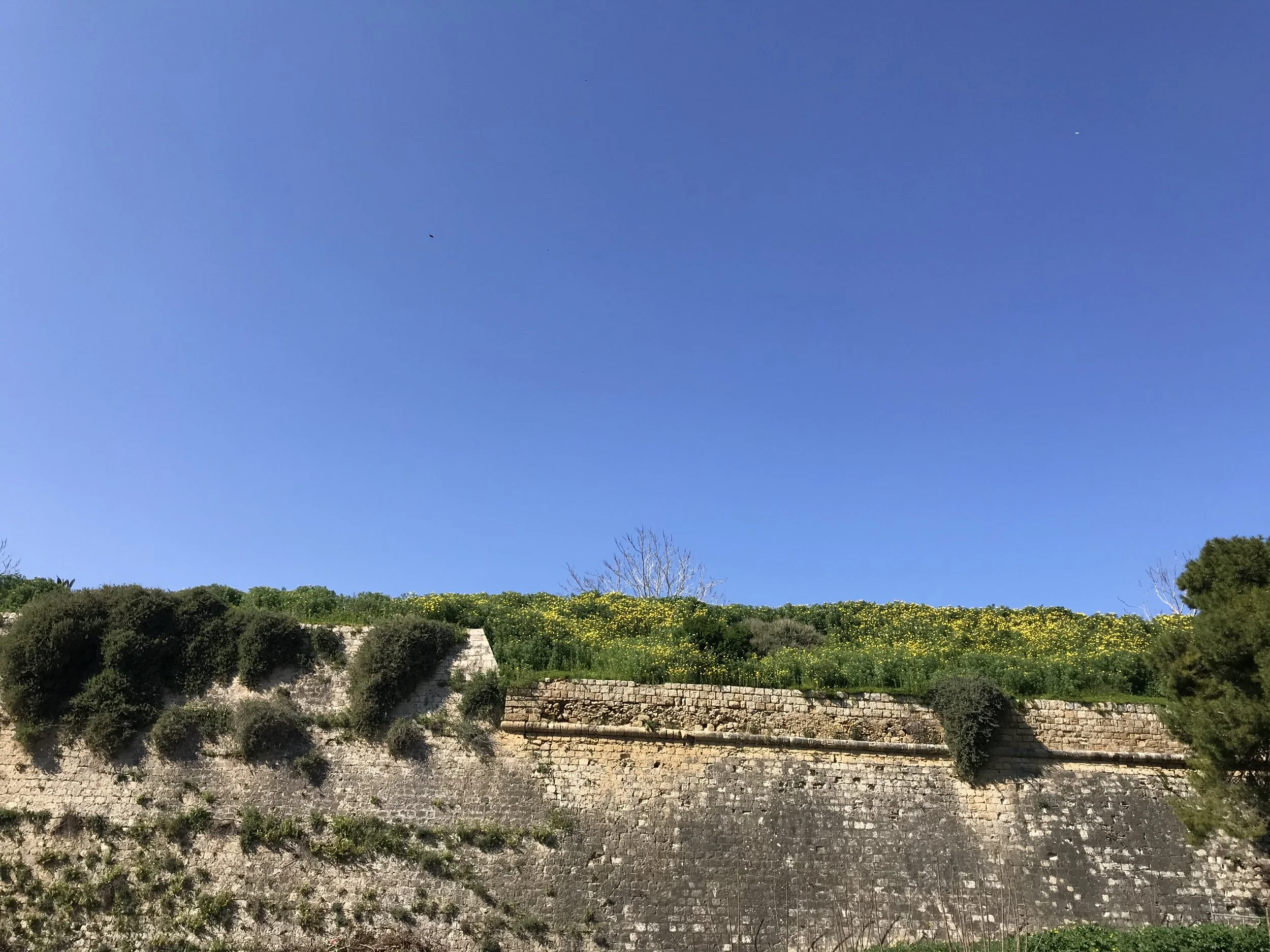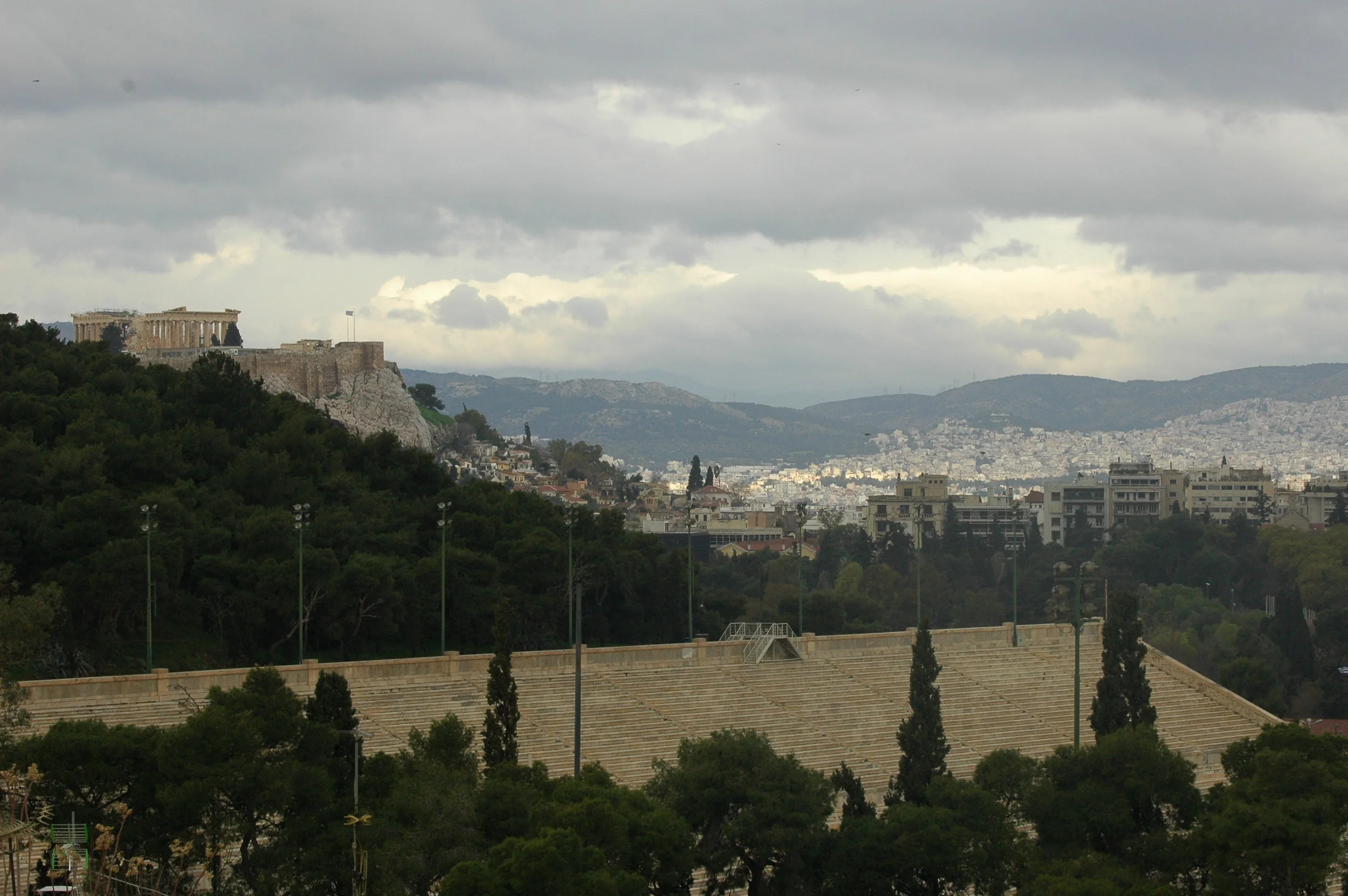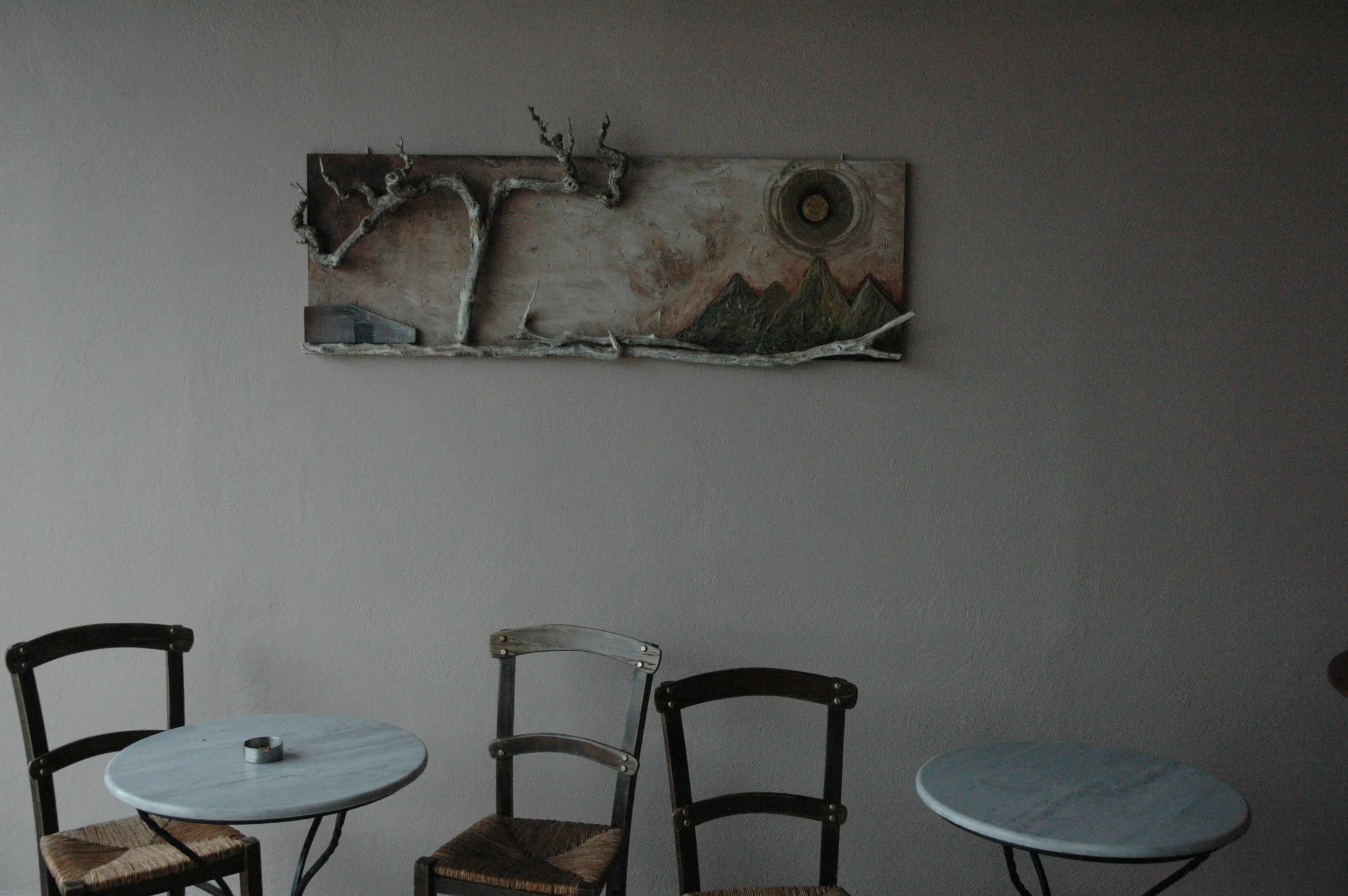Straight and Down: Navigating Crete and Knossos
Visiting the ancient palace of Knossos, located just a few short miles south of Heraklion, is the by-the-guidebook thing to do when visiting Crete. It’s one of the palaces occupied by the Minoans — the civilization named such for its famous King Minos, from whom we get the myth of the Minotaur, the labyrinth designed by Daedalus, Theseus’ slaying of the monster, Ariadne’s ball of string, and Icarus flying too close to the sun.
Going to Knossos means turning back the hands of time 5000 years. That alone is incomprehensible. The earliest Minoans settled in Crete in the neolithic age and occupied the territory until around 1200 BCE.
Dates are not typically my strong suit, but I’ve been trying to keep a few data points in my head.
Minoans 3000-1200 BCE
“Trojan War” - about 1200 BCE
8th century BCE - Greek alphabet
750-ish BCE - Hesiod and Homer
6th century - Solon sets laws for Athens (☝️Rise of democracy☝️)
5th c - Golden Age of Athens
100s CE - Herodes Atticus & Roman rule in Athens
These were floating around somewhere in the back of my brain, along with all the Greek vocabulary I have forgotten, the maps and bus stops and scheduling I’ve committed to memory. There was a genuine part of me that thought I would not make it to Knossos before it closed. That day I had missed every bus I intended to take. I thought the bus stopped at places it didn’t. At one point I realized I had caught the wrong bus all together and had the driver stop at an impromptu corner so I could slouch back towards Heraklion. When I got to the site, tour guides began to accost me in Greek, English, German and Russian. I gave the stupidest shrug I could muster, as if to say I didn’t know any of those languages and so they were out of luck. I’d love to support the Greek economy and their certified historians — if you visit, you should consider it too — but with the kind of morning I had I was hellbent on some quiet time.
To be fair I had read up some. I found a copy of The Greek Islands by the utterly entrancing Lawrence Durrell and read the chapter on Crete, and before leaving the US I downloaded The Rough Guide to Crete to my e-reader. So I had some of the broad strokes. I had some dates in my noggin. I had some skepticism. There was some anger at the day yet I proved to be highly excitable and easily distracted.
Much of the excavation was done by Sir Arthur Evans. I had read enough to be skeptical of his interpretations of what rooms may have been specifically used for. That said, I wasn’t looking for answers this afternoon, but I did feel a sense of wonder. The stones can be stacked and smooth into beautiful walls. Or some walls and pillars are just blown up. The site has prescribed walkways and wooden bridges —it’s not a totally free-reign park. But I’d stand on the bridge and consider the labyrinthine paths of a much older stone. Durrell, in The Greek Islands, talks about Knossos as a way of tracking the emergence of culture: hand tools becoming sophisticated, abstract thought and artistic talents beyond mere utility. Trade was evident. You see the traces of a culture building on top of the shoulders of others. And still the significance of the passages, the rooms at Knossos, are rather reticent. Was the large room used for acrobatics or was it a dining hall?
The specifics are hard to know. When I visited Knossos six years ago as a student, I dwelled in my ambivalence in a way I simply couldn’t now. When you walk around and you can’t know specifics, but realize it’s a place where people ate, entertained, conducted business, fell in love. Among all that, Knossos also has evidence of a rather advanced plumbing system. The Minoans had a mechanism of dumping a bucket of water that would send their waste away from the palace.
With all this passing me as I quietly paced, touching the stone warmed by the sun, for reasons I cannot explain I thought of the Greek alphabet again.
On the plane ride over to Greece I read A.E. Stallings’ wonderful new translation of Hesiod’s Works and Days, which comes from the 8th century BCE. In her introduction, Stallings talks about Hesiod as one of the first self-proclaimed poets, and perhaps one of the first to make use of a new technology to record verse — the Greek alphabet.
That’s when it occurred to me that this civilization would collapse before the Greeks even developed their alphabet. That everything on site — including the invention of indoor plumbing! — was even older than putting vowels into written characters. To think of all the things that strange little technology could set in motion and that the architects of this elaborate structure would miss out on was overwhelmingly beautiful and sad, and still endlessly mysterious.
About a week or two after this adventure to Knossos, I would be at a bar explaining to a bunch of Cretans why I’m here — and I’d let this enthusiasm for Knossos slip.
“I don’t give a goddamn fucking horse shit about the Greek alphabet,” said a man at the adjacent bar stool. “The Cretan spirit,” he pounded his chest “Our sounds, our words, it’s in our mouth.”
He laughed through his only tooth and held out his wine glass for me to clink.
And indeed, Crete is not the Greek alphabet. Crete is the mouth.
The other day I detected a great deal of dark mold in my original apartment, over in the western seaside suburb of Heraklion, called Ammoudara. I fortunately was able to find a new apartment on Airbnb that was just outside the Venetian walls that fortify Heraklion. The apartment is managed by property management company with several homes in Crete, Athens, and Thessaloniki. She’s branded the apartment as “Ariadne” after the daughter of Minos.
The story of Ariadne is such: when Theseus, son of an Athenian king, was sent to Crete to be killed by the minotaur as a sacrifice, Ariadne fell in love with him at first sight. With her help, Theseus set out to slay the monster. The minotaur lived inside a labyrinth designed by Daedalus (father of Icarus). The loving Ariadne gave him a ball of thread so when he killed the monster he could find his way out. Daedalus also gave Ariadne instructions on how to navigate the impossible maze. Go straight and down, and never left or right. This led Theseus to the center of the maze where he found the sleeping beast and cut off its head.
When I was getting checked into my apartment a woman met me at the front gate with the keys. She was the mother of the property manager. She showed me around the apartment, how the water heating worked, where to find towels and so forth. Because the buses had caused me such trouble at my last place, and I’d gotten so terribly lost or showed up late to places, I asked my attendant to give clear instructions for the bus.
“Bus? To where? Where do you want to go? The Center?”
“Yes, the center, where everything is.”
“Don’t take a bus, you don’t need it. Look — it’s straight that way and you’ll be in the center in 10 minutes. From this street, just go down and straight."


